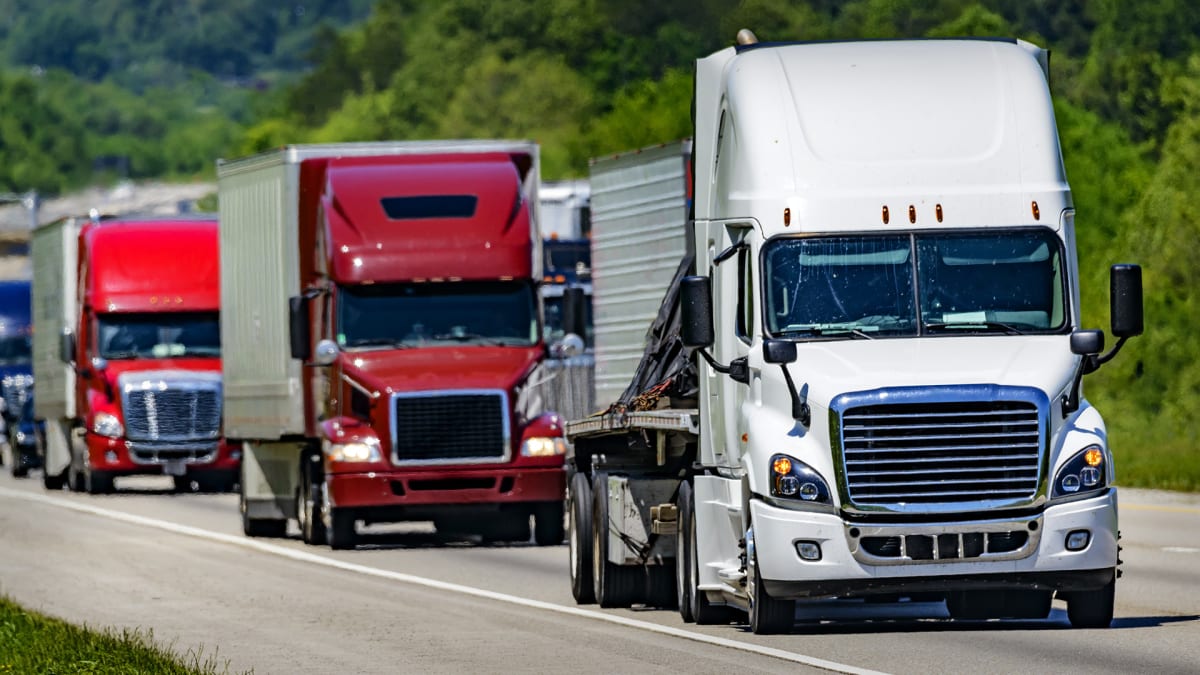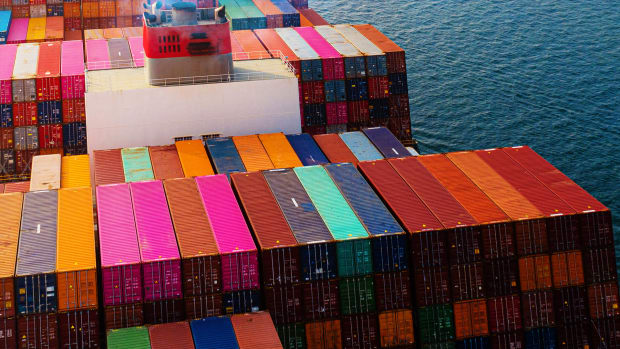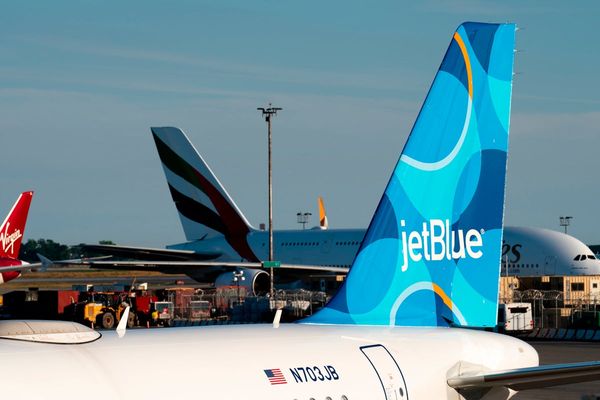
Before the world turned into a scene out of "Mad Max" where people were hunting for toilet paper and other basic essentials, few Americans ever thought about the supply chain. Now, everyone has experienced going to a store and not finding exactly what we want.
Obviously, covid caused some of those problems, but the end of the lockdown part of the pandemic does not mean that everything magically returns to normal or that prices fall back to where they once were.
Brian Alster, general manager of the North America Finance & Risk and Enterprise Platform businesses at Dun & Bradstreet, and Nicholas Ellis, Partner at Foley and Lardner, an international law firm, answered a number of questions on the supply chain via email. Their answers make it clear that while the impact of the pandemic may have become less severe, we're hardly back to normal (and maybe should not expect to be.

Image source: Shutterstock
TheStreet: How much of the ongoing supply chain woes are pandemic-related?
Alster: While the Covid-19 pandemic has exacerbated supply chain disruptions, the pandemic showed the holes in the industry’s infrastructure and processes in the supply chain that have been there all along. As we look forward to the next year, we will see risk assessments continue to heighten within organizations to find where they are most vulnerable to streamline their supply chain process.
Ellis: Many of the current issues we are seeing in the supply chain still have their roots in the pandemic, even if they are not directly caused by the pandemic today. Pre-pandemic, the global supply chain was a well-oiled machine and model of efficiency, with many manufacturers and even retailers operating on a “just-in-time” model in which they maintain very little inventory.
However, that level of efficiency also meant that there was very little unused capacity or leeway in the system. You can make a good analogy to airline travel. Flights are scheduled down to the minute to minimize the time that planes are idle. As long as everything is running smoothly, it works well. However, even a small delay can cause expanding ripples throughout the system.
Covid-19 was the perfect stress test for supply chains. Much of the supply chain effectively shut down in 2020, but restarting something like the global supply chain is not as simple as flipping a switch. Different parts of the chain came out of lockdown at different times, or maybe never even went into lockdown. Periodic outbreaks and returns to lockdown, as well as labor shortages and other issues, often combined to create bottlenecks and delays, most notably around the ports.
All of this was coupled with a large surge in demand for certain products. As a result of these and other challenges, the restart was rocky for many companies and ongoing issues simply have prevented the supply chain, thus far, from returning to its pre-pandemic levels of efficiency.
TheStreet: Are companies figuring out the sort of new normal for consumer demand?
Alster: It is important to bear in mind that consumer demand is always shifting. As we settle into our new normal, we are seeing consumers be increasingly affected by inflation and price hikes, which impacts consumer behavior.
In order to adapt to these fluctuations in a high-demand environment, companies need to invest in supply chain technologies and pay very close attention to their supply chain data. A key method to do so is by developing a risk-based assessment process that helps identify and continuously monitor a variety of risks that could impact the productivity of a supply chain. Risk conditions can include a range of incidents, from natural disasters such as hurricanes, to geo-political risks such as trade wars and worker shortages
Ellis: Most companies seem to have a good idea of current demand, although that may change if we enter a recession. The primary issue for many companies has been production capacity and transportation to get their goods to the consumers.
TheStreet: Will the big retailers continue to have a major advantage over smaller players?
Alster: As supply chain disruptions have plagued all industries, we have seen that all companies, regardless of size, have been negatively impacted. However, companies with more proactive supply chain processes and greater access to capital, have been able to limit the negative impact on their profitability.
Small businesses typically do not have these proactive processes in place, nor do they have access to the incremental working capital necessary to weather a supply chain disruption. So, we believe smaller businesses will continue to be disadvantaged vs. the big retailers.
Ellis: In most cases, the answer probably is going to be yes. The inherent advantages that come with economies of scale have not changed. Bigger companies have more leverage when it comes to negotiating terms and, in many cases, are more able to absorb higher costs and/or pass them through to consumers. Bigger companies often (but not always) have easier access to credit markets, which may prove to be a significant factor as interest rates increase and lenders (fearing a recession) become more risk-averse.
That said, there may be some smaller companies for which lower fixed costs and greater flexibility may be enough to overcome the advantages of some bigger competitors.
TheStreet: How will the U.S. address its truck driver shortage?
Ellis: This is a significant issue that does not have a simple fix. Many companies are trying a variety of incentives to attract and, perhaps more importantly, retain drivers. This includes increased pay and paid training, but also measures to promote work-life balance, including shorter and more predictable routes. Companies also are looking for ways to use technology to improve the efficiency with which they are using their existing labor force. Many companies are also working to try and develop autonomous trucks. However, this is unlikely to be a viable solution in the short term
TheStreet: Is automation going to be a key part of solving supply chain issues?
Alster: In my view, there should be an increased focus on digital transformation. Supply chain leaders must act now to digitally transform their supply chain operations using data-driven insights that offer real-time transparency into the financial and operational health of every supplier across all tiers. Automation is critical to mitigating supply chain risks.
Global sourcing and supply chain organizations are cost centers; therefore, they don’t typically have large resources to do their jobs. Automation of data collection, analysis, and ongoing monitoring are critical for companies to meet the growing demands of onboarding more vendors, measuring more risk factors, and doing it faster than ever before. Companies that do not invest in automation to mitigate risk will continue to struggle over the next several years.
Ellis: Automation has been a major element of the supply chain going back to before COVID-19 and likely will continue to do so. Labor shortages are a major driver of automation as the lack of workers gives manufacturers and transportation companies a greater need to look at automation as a solution, while the accompanying rise in labor rates makes the investment involved in automation more cost-competitive.
TheStreet: What are the biggest headwinds facing the industry?
Alster: As we head into 2023, we have seen more and more companies proactively leverage automation and third-party data to mitigate supply chain disruptions. Many companies are now turning to digitizing their processes and looking at near-shoring processes for their supply chains in order to mitigate the logistical risks associated with off-shoring. Finally, inflation and general economic instability could negatively impact consumer demand, and companies must be ready to meet this challenge head-on.
Ellis: For most companies, inflation, and difficulty obtaining a sufficient/stable workforce. Many companies simply cannot get (and retain) enough workers to meet their current needs and demands. While labor costs are a significant driver of the cost increases that many companies are seeing, it is far from the only driver.
Like consumers, companies are facing a proverbial “death by a thousand cuts.” Cost for all kinds of expenses, from salaries, to materials, to the napkins in the cafeteria and laundry for company uniforms is increasing. In addition to these line-items, every challenge that companies face, every delay in shipment, every loss of productivity as a new employee is getting up to speed because of turnover, increases a company’s overall costs, and decreases the efficiency upon which modern global supply chains rely.
TheStreet: What else do consumers and investors need to know?
Alster: Supply chain disruptions are here to stay for a while. We continue to see negative impacts from labor shortages, macro-economic impacts, geo-political unrest, natural disasters and other shocks to the system. Companies need to begin playing off their front foot and realize that proactive supply chain illumination and risk management are critical to successfully navigating the continued disruptions that lie ahead.
Ellis: Expect the unexpected. For several decades, the world (and global supply chains in particular) benefited from a period of relative stability, or at least predictability. A stable business climate, predictable lead times, and low inflation allowed for the kind of long-term planning and efficiency that turned the global supply chain into a modern marvel. With the advent of the pandemic, the war in Ukraine, growing political instability, inflation, weather, and climate-related events, and many other impacts to the supply chain, we are likely to see much less stability and predictability in the supply chain for some period of time.
While many people are still waiting for the world to flip a switch and return to “normal” (read pre-pandemic), there are few reasons to believe that we will see anything like that happening in the short term. We can’t say with certainty what will be the next challenge faced by the supply chain, but we all need to be flexible and prepared.







